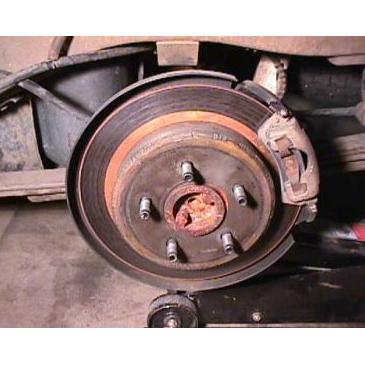overloaded
Member
- Joined
- Aug 6, 2014
- Messages
- 11
- Vehicle Year
- 2004
- Transmission
- Automatic
First off, specs: I have a 2008 XLT 4.0 4x4 that I just finished up doing the Explorer rear end swap on to get a limited slip, and now have the Explorer rear calipers as well. In the process I found the master cylinder was beginning to fail, so I swapped that too.
I was looking into how to properly do adjustment for the booster, but it seems like the standard gauges would be useless for my generation of Ranger since the MC's plunger sticks out of the body rather than being fully-contained within it like previous generations were. I've seen snippets of shop manual info referencing gauge blocks with stated dimensions to set the rod to when the pedal is pushed, but it seems like that's just for the '94 era Rangers/Broncos/Explorers with the internal plunger.
Does anybody have the specifics on how far the rod should stick out according to the factory service manual? Or, possibly how to measure it out properly and set the rod protrusion before bolting back up? I don't want to accidentally preload things and screw it up or get into an accident as a result.
Aside from that, man is this pedal soft now - I know there's a teensy tiny bit of air left in the system(I bench-bled it completely and then power-bled it with a Motive pressure kit after installation, but didn't do the ABS burp yet), but the pedal was an absolute rock beforehand - is it recommended on later models to to replace the stock MC with a different model? I know the '10-'11 FX IIs came stock with rear discs, and as far as I know the '08s do not have any kind of load sensing proportioning valve I should be swapping, but as far as switching for an FX II MC it's hard to tell whether or not the nut and line sizes actually match up without having one in hand, or if there's any real difference to them vs the standard rear-drum MC.
Or, is this explorer rear disc swap just known to produce a very soft pedal? I started it up and did a few test presses in the driveway at around 5 mph and while it's very soft, I don't have to push the pedal particularly far or hard to stop immediately, so rather than just shotgun guesses at fixing it I'm hoping somebody on here has dealt with this and can tell me what I should really should be doing. I checked around the Tech Library but it's pretty vague as far as how to measure things, other than the "just guess and check a few times" method mentioned in this article:

and as far as I can tell, that's going to involve draining and removing/remounting the cylinder quite a few times, which I'd definitely like to avoid if possible.
Thanks, everybody.
I was looking into how to properly do adjustment for the booster, but it seems like the standard gauges would be useless for my generation of Ranger since the MC's plunger sticks out of the body rather than being fully-contained within it like previous generations were. I've seen snippets of shop manual info referencing gauge blocks with stated dimensions to set the rod to when the pedal is pushed, but it seems like that's just for the '94 era Rangers/Broncos/Explorers with the internal plunger.
Does anybody have the specifics on how far the rod should stick out according to the factory service manual? Or, possibly how to measure it out properly and set the rod protrusion before bolting back up? I don't want to accidentally preload things and screw it up or get into an accident as a result.
Aside from that, man is this pedal soft now - I know there's a teensy tiny bit of air left in the system(I bench-bled it completely and then power-bled it with a Motive pressure kit after installation, but didn't do the ABS burp yet), but the pedal was an absolute rock beforehand - is it recommended on later models to to replace the stock MC with a different model? I know the '10-'11 FX IIs came stock with rear discs, and as far as I know the '08s do not have any kind of load sensing proportioning valve I should be swapping, but as far as switching for an FX II MC it's hard to tell whether or not the nut and line sizes actually match up without having one in hand, or if there's any real difference to them vs the standard rear-drum MC.
Or, is this explorer rear disc swap just known to produce a very soft pedal? I started it up and did a few test presses in the driveway at around 5 mph and while it's very soft, I don't have to push the pedal particularly far or hard to stop immediately, so rather than just shotgun guesses at fixing it I'm hoping somebody on here has dealt with this and can tell me what I should really should be doing. I checked around the Tech Library but it's pretty vague as far as how to measure things, other than the "just guess and check a few times" method mentioned in this article:

Explorer 8.8 Rear Disc Brake Conversion - The Ranger Station
Before You Begin: The disc brake conversion described in the article below was performed on a stock 1994 Ford Explorer Sport. Therefore, this article does not take into consideration any modifications or different model years. The most difficult part … Continued
www.therangerstation.com
and as far as I can tell, that's going to involve draining and removing/remounting the cylinder quite a few times, which I'd definitely like to avoid if possible.
Thanks, everybody.












